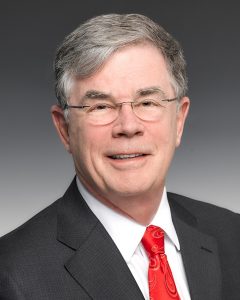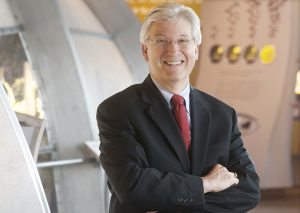Editorial
Bridging the Gap With STEM
Connected Science Learning March 2016 (Volume 1, Issue 1)
By Anthony (Bud) Rock, and David L. Evans
Connected Science Learning is a journal around which all science, technology, engineering, and math (STEM) educators can gather. The National Science Teachers Association (NSTA) and the Association of Science-Technology Centers (ASTC) have partnered on this National Science Foundation (NSF)–funded project to leverage our extensive combined reach across the formal and informal STEM educator communities. NSTA represents about 50,000 K–12 science educators, while ASTC member science centers and museums are in communities across the globe, reaching 100 million visitors per year, many of whom are young learners. The new journal and complementary social media channels will facilitate collaboration between the formal and informal STEM education communities by sharing relevant research, practices, instructional strategies, and resources, while highlighting mechanisms for collaboration.

Almost every aspect of society today is influenced by STEM. Whether captivated by new discoveries at the edge of the universe, reassured by progress against disease, or intrigued by the latest smartphone app, we are immersed in the STEM world every day. A topic of such importance demands a prominent place in our education system in the broadest sense—from the classroom, to the after-school setting, to the home. Science literacy is as important as reading and writing for all people.
Despite the importance of STEM education and literacy, we have not made as much progress as we need; in the classroom, student scores on both international and domestic tests are disappointing, and too few students are career or college ready. In out-of-school settings, life skills and inspiration aim to help move the needle on career readiness, but there is room for a more in-depth understanding of how we can achieve this goal. Fortunately, research shows that there are better ways for young people to learn other than the traditional lecture–demo–test methods. Students need to experience real phenomena, pose their own questions, learn how to collect evidence or data, and formulate their own explanations. They can do that in the classroom and in experience-rich science centers, zoos, museums, and a variety of out-of-school programs. Resources and methods are different between in-school and out-of-school pathways, and we believe that effectively combining those resources will lead to a more coherent way to tackle the skills needed for 21st-century jobs.

ASTC and NSTA have worked collaboratively for many years, as have our members, especially in the area of teacher professional development. We share a mission to promote public interest and understanding of science. ASTC lists “public engagement and inspiration” among the drivers of the association, and NSTA’s mission includes “science teaching and learning for all.” This new journal aims to bridge the gap between in-school and out-of-school learning and, as a result, brings value to the NSTA and ASTC communities. Many of the contributors are from our communities, writing for the benefit of those across the entire fields of formal and informal science learning. Our educators, program directors, administrators, exhibit designers, and volunteers strive to ensure that young learners succeed in understanding and using STEM skills in their lives. This journal is the perfect vehicle to enable them to do this.
We appreciate NSF’s support to improve communication among all STEM educators. We are grateful to those who have participated in surveys and focus groups to help us shape this issue. It is essential to connect learning across time and space (in-school and out-of-school) and to recognize that learning now and in the future will need to link what young people do at school, at home, and in out-of-school settings. Please let us know how we’re doing.
Anthony (Bud) Rock (brock@astc.org) is president and CEO of the Association of Science-Technology Centers (ASTC). David L. Evans is the executive director of the National Science Teachers Association, the world's largest professional organization representing science educators of all grade levels.
STEM Middle School Elementary High School Informal Education

